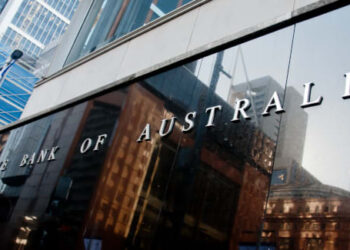The Reserve Bank of Australia (RBA) considered whether to raise the cash rate target by a further 25 basis points or leave it unchanged at its meeting in February.
“The case to raise the cash rate further centred on the observation that it would take some time for inflation to return to target and the labour market to full employment,” the central bank said in its latest meeting minutes.
The bank explained that given its expectation that inflation would take a further two years to return towards the midpoint of the target range, members considered increasing the cash rate in February to reduce the risk of inflation not returning to target in an acceptable timeframe.
“Increasing the cash rate target now would not prevent the board from easing monetary policy if the economy were to weaken more sharply than envisaged,” the RBA assured.
The board eventually decided that the risk of inflation not returning to the target “within a reasonable timeframe” had eased and left the rate unchanged at 4.35 per cent.
“The moderation in inflation over preceding months had been slightly larger than previously expected, and global inflation outcomes had provided additional confidence that inflation in Australia would moderate further,” the central bank said.
“Data on the labour market and consumer spending had also been weaker than previously expected. Members noted that it was possible that conditions in the labour market were already consistent with full employment, although this was judged to be unlikely.”
The RBA explained that its final decision “best” balanced the board’s objectives for price stability and full employment.
“Members noted that the data had evolved in a manner that gave them more confidence that inflation would return to target within a reasonable timeframe while allowing employment to continue to grow.”
The RBA also discussed market pricing which suggests that cuts of around 50 basis points are likely by the end of 2024.
It noted that “fewer reductions” in the policy rate were expected in Australia than in many other advanced economies, given that the local policy rate would peak at a lower level than in other advanced economies and decline later.
Earlier this month, RBA governor Michele Bullock said that the bank is not fazed by market pricing.
“We don’t think of market pricing as being a forecast of our own cash rate,” the governor said.
“Markets will make their own decision and they are putting their money where their mouth is on those sorts of things. But we’re not driven by market pricing. What’s important for us is looking at the economic data.”
The economic data is currently suggesting robustness and resilience despite 13 rate hikes since May 2022. However, economists have warned that an overly cautious RBA could hurt the economy.
Namely, many have labelled the RBA’s latest inflation forecast as too conservative, with Deutsche Bank cautioning last month that the RBA should be “cutting more and earlier, rather than less and later”.
Following its February rate call, the RBA announced its revised inflation forecast which points to a drop in inflation to 3.3 per cent (instead of the earlier predicted 3.9 per cent) by June.
From there, however, the RBA expects inflation to ease at a snail’s pace, reaching 3.2 in December and 3.1 per cent six months later. By the end of 2025, inflation is expected to finally hit the target band by reducing to 2.8 per cent, before dropping further to 2.6 in June 2026.
“History suggests the RBA’s latest forecasts are at risk of proving too conservative,” the financial institution’s chief economist for Australia, Phil O’Donaghoe, told InvestorDaily at the time.
“The RBA suggested that a ‘further increase in interest rates cannot be ruled out’, we would instead argue more emphatically that a May rate cut cannot be ruled out. Recent data could well mark a turning point. And at turning points, it pays to be nimble,” he added.
AMP’s chief economist, Shane Oliver, predicts that the RBA will adopt an easing bias in May.
“Our assessment remains that the combination of weaker growth and a faster fall in inflation than the RBA currently expects will ultimately force its hand and we continue to see it cutting rates from mid-year with three 0.25 per cent rate cuts by year end, taking the cash rate down to 3.6 per cent by December,” Dr Oliver said earlier this month.
However, the RBA would appear to be far from an easing rhetoric, having acknowledged in the minutes of its February meeting that it is “not yet possible” to rule in or out further increases in interest rates.







